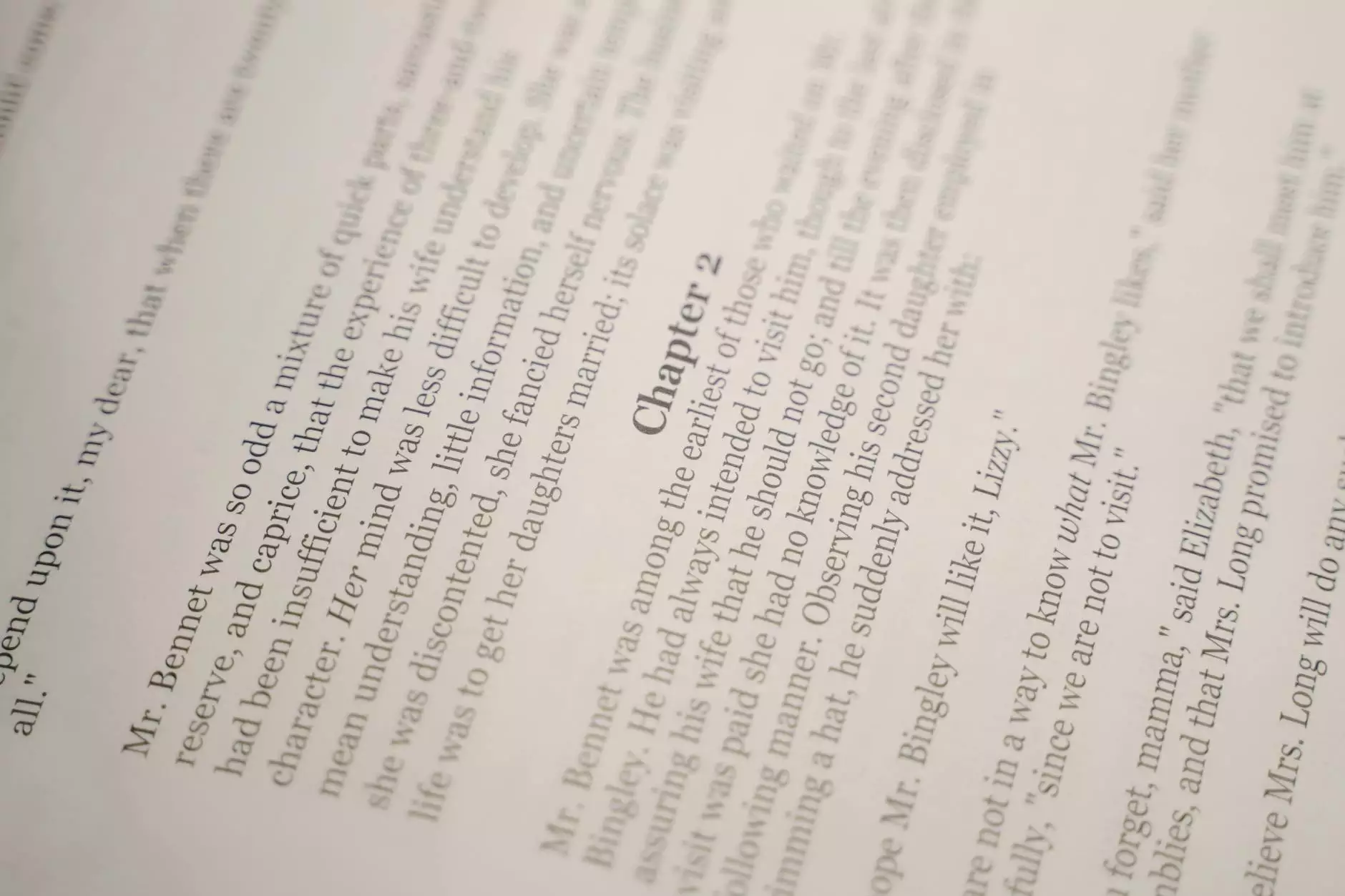Writing Chapter 2 of a Project - A Comprehensive Guide

Introduction
When it comes to academic writing, one of the most critical chapters of a project is Chapter 2. This section, often referred to as the literature review, provides a comprehensive analysis and synthesis of existing research relevant to your project's topic. Writing an effective and compelling Chapter 2 requires meticulous research, excellent organization, and advanced writing skills.
Understanding the Purpose of Chapter 2
The purpose of Chapter 2 is twofold. Firstly, it demonstrates your knowledge and understanding of the existing literature in your field, showcasing the academic foundation upon which your project is built. Secondly, it helps identify any gaps or controversies in the current body of knowledge, highlighting the significance and relevance of your research.
Research and Planning
Before diving into the actual writing process, it is essential to conduct thorough research. Start by identifying the key concepts, theories, and methodologies related to your project. Utilize academic databases, scholarly journals, books, and reputable websites for gathering relevant information.
Gathering Relevant Literature
Selecting high-quality sources is crucial to writing a reliable literature review. Look for peer-reviewed articles and scholarly publications from reputable authors and institutions. Remember to critically evaluate each source for its relevance, reliability, and validity.
Organizing Your Literature
Creating an organized structure for your literature review will make the writing process more manageable. Consider categorizing the literature based on themes, theories, or methodologies. This approach allows for a coherent and logical flow of information, making it easier for readers to comprehend and follow your arguments.
The Writing Process
Now that you have gathered and organized the relevant literature, it's time to start writing your literature review.
Introduction to Chapter 2
Begin your literature review with a clear and concise introduction. Provide an overview of the topic and its relevance to your project. Engage the reader by outlining the purpose, objectives, and scope of your review.
Analyzing Existing Research
In this section, delve into the analysis and synthesis of the selected literature. Identify the main themes and theories, compare and contrast different perspectives, and highlight any gaps or inconsistencies in the current knowledge. Use appropriate citations and references to support your arguments.
Connecting the Literature to Your Project
Establish a strong connection between the reviewed literature and your research project. Clearly articulate how the existing research aligns, supports, or challenges your objectives and hypotheses. This integration demonstrates the significance and originality of your work.
Organization and Coherence
Maintain a logical and coherent structure throughout your literature review. Use subheadings to separate different sections and guide the reader through your analysis smoothly. Ensure that each paragraph contributes to the overall flow of your arguments.
Critical Evaluation of Sources
When discussing each source, critically evaluate its strengths and weaknesses. Highlight any biases, limitations, or methodological flaws that could impact the validity of the research. This critical evaluation displays your ability to assess the reliability and credibility of academic literature.
Key Tips for Writing Chapter 2
- Focus on relevance: Only include literature directly related to your research topic.
- Stay updated: Refer to the most recent publications to ensure your literature review reflects the current state of knowledge.
- Be critical: Analyze the literature objectively and offer insightful critiques where necessary.
- Keep it organized: Use appropriate headings and subheadings to maintain a logical structure.
- Use proper citations: Adhere to the recommended citation style, ensuring accurate referencing of all sources.
Conclusion
Writing Chapter 2 of a project requires meticulous research, excellent organization, and advanced writing skills. By properly understanding the purpose, conducting thorough research, and maintaining a cohesive structure, you can create a compelling and effective literature review. Remember to critically evaluate the sources and establish a strong connection between the existing literature and your project, showcasing the significance and originality of your work. With these tips and strategies, you are well-equipped to write a literature review that stands out and contributes to the academic field.








